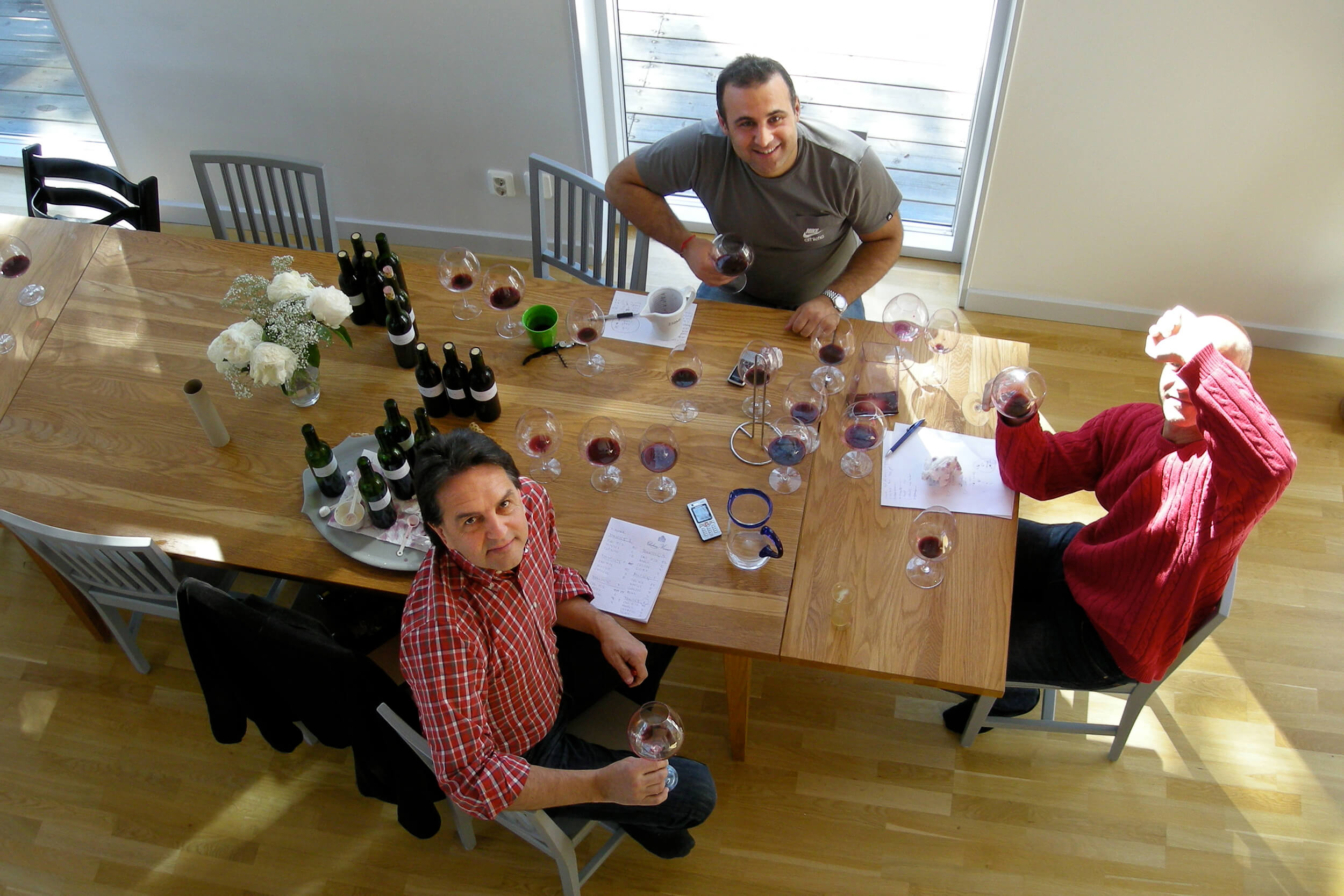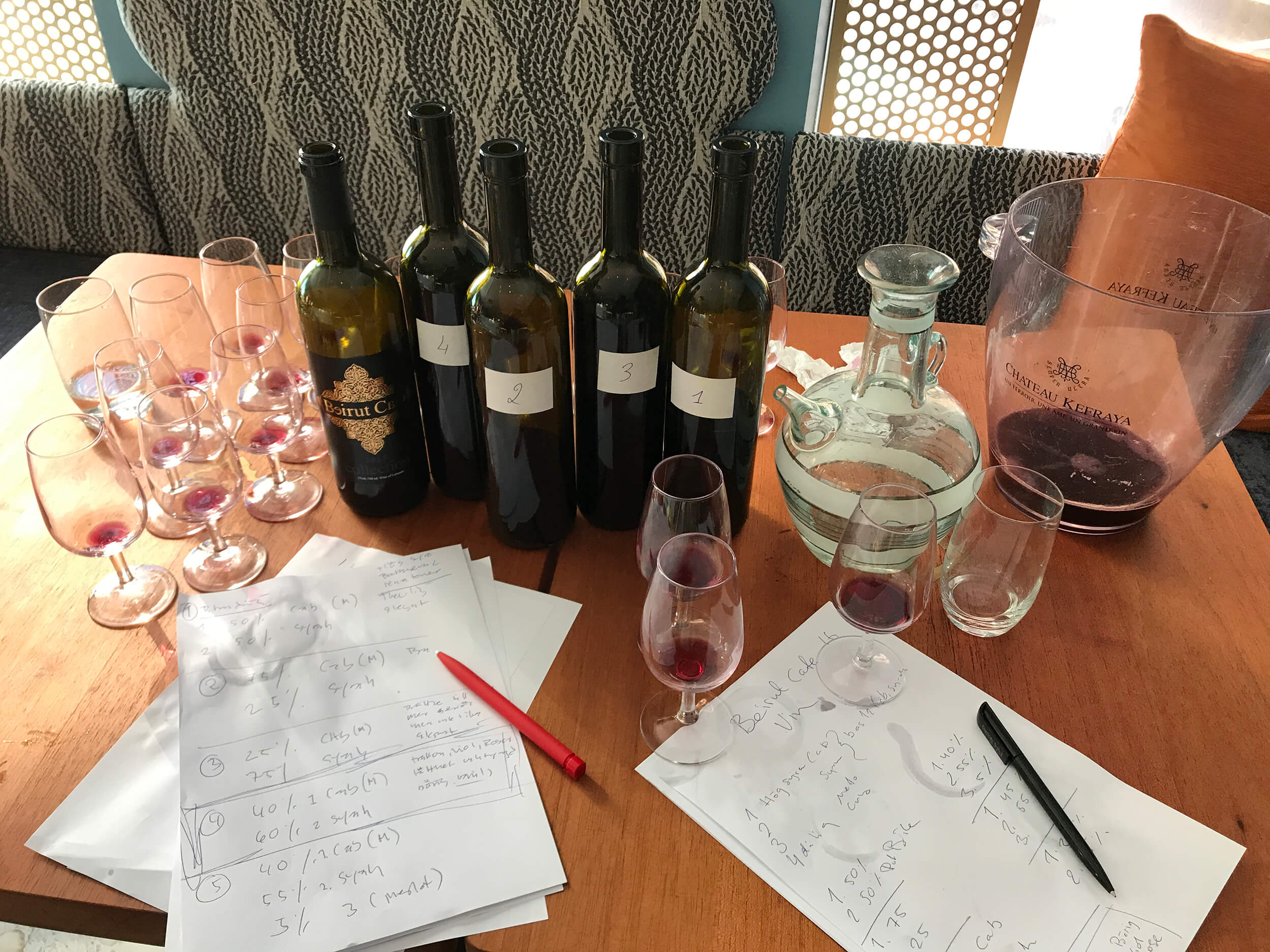Blending wine
Blending wine
Once a year, a package arrives to restaurant Beirut Café in Stockholm with a dozen bottles containing grape juice from Domaine Wardy in Bekaa valley, which found its way across the Mediterranean. An load of wines pressed and laid on the first alcohol fermentation, and the second, malolactic fermentation. Wines that will now be mixed by the wine blender Donald Boström, Elias Karroum and Richard Juhlin.
Domaine Wardy produces 12 different wines and 250,000 bottles a year. Of the now award-winning wines, the Red Private Collection, with 33 percent cabernet, is 33 Percent Merlot and 34 Percent Syrah, Wardy's Prestige Wine, with tones that also are recognized from Beirut Café's wines on the same grapes and soil.
"Our merlot grows at 900 meters high, Syrah on 1 100 and Cabernet Sauvignon in the west at 1 300 meters in more muddy soil. Each grape has its terroir, "said Aziz Wardy direct the Wardy families wine production in Bekaa valley, and looks over the vines raging against the classic mountains that frame the Bekaa valley plateau.
"We finish harvesting ten o'clock in the mornings and press the grapes within an hour. Then the grape juice is fermented for three weeks in a first alcohol fermentation. Elias Karroum, owner of the Beirut Café restaurant, and I'm listening interesting because it's these grapes, harvest since 2007 we have blended Beirut Café's own popular wine with. Once a year, a package of dozens of bottles comes to the Stockholm restaurant containing grape juice from Domaine Wardy in Bekaa valley. In that situation, we call our third partner in the wine blending team: Richard Juhlin, world famous for his exceptional champagne skills, and he was not difficult to convince when blending a very unique wine with grapes from the bible grape valley need to be done.
We finished the work with the premiere cuvee with grapes from the harvest in 2007. Thereafter, the wine is stored on French oak barrels in Lebanon for a year before the bottles are shipped from Beirut to Sweden.
We look for different main hints in the flavors. Either we would build on a body of peppers and blackberries Syrah this time, or on creamy, dense and fluffy Merlot. With pipette and measuring glass we tried the different tracks. When we thought that we were completely ready, then we tried to change the composition by just a few percent in different combinations. We became humble! How could the wine totally cantilever when we removed one percent Cabernet? And how could Syrah suddenly become Australian mint after a small adjustment with only two percentage? In the end we find our wine, a nice modern, international Merlot-driven wine that could fool many people. Unfortunately, we did not have access to as much merlot as our creation required and we had to start the process allover again. Finely the cuvee was finished, with a blend of 86 percent Cabernet Sauvignon, 6 percent Merlot, 6 percent Caladoc and 2 percent Syrah. Our first blend was not as enjoyable as we expected, but it developed strongly during storage and in combination with the food it became a gastronomic breakthrough according to the enthusiastic staff.




